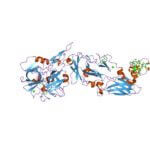http://www.biocompare.com/Editorial-Articles/339420-Gene-Editing-Not-Just-CRISPR/
The impact of gene editing on biomedical research has been similar in breadth and depth to that of PCR 30 years ago. Readers can find excellent summaries of the principal editing techniques, Clustered Regularly Interspaced Short Palindromic Repeats (CRISPR), transcription activator-like effector nuclease (TALEN), and zinc finger nuclease (ZFN), through any search engine.
ZFN led the surge chronologically, followed by TALEN, then CRISPR. Each succeeding development eclipsed the previous one by virtue of easier use and greater familiarity with gene editing. CRISPR is generally credited with being significantly easier to use, hence its wide adoption among basic researchers.
Yet despite sales of ZFN reagents tailing off to baseline, and TALEN use dropping nearly as precipitously, those methods still hold promise for what is arguably the most value-driven gene editing application of all—therapy. ZFN and TALEN have reputations for being more precise than CRISPR. A recent paper by
Schaefer et al., in Nature Methods that described deep sequencing to uncover off-target CRISPR effects, reinforced this belief. The authors noted that “concerns persist regarding secondary mutations in regions not targeted by the single guide RNA...We found an unexpected number of single-nucleotide variants...compared with the widely accepted assumption that CRISPR causes mostly indels at regions homologous to the sgRNA.”
ZFN and TALEN have reputations for being more precise than CRISPR.
“The simplicity and accessibility of CRISPR to researchers has democratized genome editing and changed the face of disease research to the benefit of scientists and, in fact, the world,” says Martha S. Rook, Ph.D., head of gene editing and novel modalities at MilliporeSigma. “However, mature gene-editing technologies such as ZFN and TALEN remain the methods of choice for critical research where clear intellectual property rights are desirable.”
Back to ZFNs?
Where CRISPR relies on a gene-targeting guide RNA to bind a chosen gene sequence, ZFNs have the advantage of being a protein-only construct that may be optimized to increase precision and specificity, particularly for clinical gene editing.
According to Michael Holmes, Ph.D., vice president of research at Sangamo, ZFNs demand a higher level of protein engineering knowledge than CRISPR. “That’s why when researchers think of gene editing they first consider CRISPR, but when you’re thinking therapeutics what’s easiest may not be best.”
In December 2015, FDA approved an Investigational New Drug Application for SB-FIX, Sangamo’s hemophilia B treatment, that inserts a therapeutic gene into the albumin gene locus in liver cells.
Sangamo’s target, the endogenous albumin locus in the liver, is highly expressed. “When we insert a therapeutic transgene into this very powerful promoter we can exploit the liver as a protein production factory, a technique that requires editing a very small number of hepatocytes to produce therapeutic levels of protein,” Holmes says.
Sangamo’s optimized ZFNs provide high specificity with levels of off-target modification below the detection limits of state-of-the-art oligo-capture and deep sequencing assays. “This ability, to obtain editing efficiencies of greater than 80% at the intended on-target site in the genome with no detectable off-targets is where you want to be with therapeutic gene editing,” Holmes adds.
The edits made to the genome by Sangamo’s zinc finger platform are genetically stable, and the process does not appear to affect the inherent stability of the genome in either primary or transformed cells. The reagents act transiently but the traits they confer are permanent, even with rapidly dividing transformed cells—many of which are genomically unstable. “There are of course natural evolutionary forces, which cause cells after many passages to not divide as well or to lose chromosomes over time, which is to be expected” Holmes explains. “But this is neither more nor less likely than in the unedited genome.”
Improving a good idea
Despite its disadvantages CRISPR retains distinct advantages for many applications, Rook explains that CRISPR’s programmable RNA-to-DNA targeting provides the design simplicity that makes CRISPR whole-genome libraries cost-effective and accessible to all researchers off-the-shelf. “Further, the increased cleavage efficiency of CRISPR compared with ZFN and TALENs enhances its application to both whole-genome screens and single target genome-editing projects.”
MilliporeSigma recently announced an improvement to CRISPR that makes the editing tool more efficient, flexible, and specific. Proxy-CRISPR, described
in a recent Nature Communications paper, will accelerate drug development and gene therapy by accessing “previously unreachable areas of the genome,” according to the company.
The Proxy-CRISPR method employs two CRISPR binding events for high-efficiency cutting. The first binding event is from a CAS9 that lacks DNA endonuclease (i.e. cutting) activity; the second binding event arises through a CRISPR system that similarly cannot, on its own, cut human DNA. “We discovered that targeting dead Cas9 next to other CRISPR systems can greatly enhance their activity,” Rook says. This strategy mimics what occurs in nature, where many different CRISPR systems bind to different DNA sequences.
Proxy-CRISPR allows greater diversity of DNA targets as might be seen in DNA sequences implicated in disease that often differ among individuals. “To address any possible disease-related mutation, to correct it, or to model it into healthy cells requires an editing technique that can target almost any DNA sequence,” Rook says. “Proxy-CRISPR method opens the door for using many additional CRISPR variants capable of unraveling the significance of genomic differences we can observe through next-generation sequencing.”
Greater flexibility
Poseida Therapeutics also shows that improving CRISPR technology can overcome off-target effects. The company recently reported preclinical data demonstrating its high-fidelity genome-editing system, NextGEN™ CRISPR, for producing allogeneic “universal donor” chimeric antigen receptor T-cells (CAR-T), an important platform for cancer immunotherapy.
Poseida has accumulated multiple gene-editing tools. In addition to NextGEN CRISPR, Poseida employs the piggyBac™ DNA Modification System, XTN™ TALEN site-specific nuclease, and Footprint-Free™ Gene Editing.
“For any given cell type there is not always one superior technology, depending on what you want to do,” says Eric Ostertag, Poseida’s CEO. “CRISPR reagents are easier and faster to design, and slightly cheaper to create than TALEN. But if you’re experienced with TALEN and are making a therapeutic, the cost and design differences amount to a rounding error.”
An advantage of NextGEN CRISPR is its application to both activated (i.e. dividing) and resting (quiescent) T cells, which confers greater flexibility over editing approaches that work only on activated cells. “The more you manipulate T cells, the greater the likelihood that the end product will exhibit an undesirable phenotype,” Ostertag explains. “Having a stem-like phenotype is critical for product efficacy and durability, which is why we prefer to engineer resting cells.” NextGEN CRISPR works well in resting T cells, whereas TALEN does not.
Wild-type CRISPR uses the Cas9 protein and a guide RNA to cut DNA. The natural ribonucleoprotein is known for high-efficiency cutting of target sequences but “is quite sloppy in the way it causes undesirable off-target mutations,” Ostertag says. Poseida’s NextGEN CRISPR uses nuclease enzymes that are more typical for zinc finger and TALEN in that they require both half-sites to be present at the same time and at the correct location in the genome, thereby resulting in exquisite on-target specificity.


